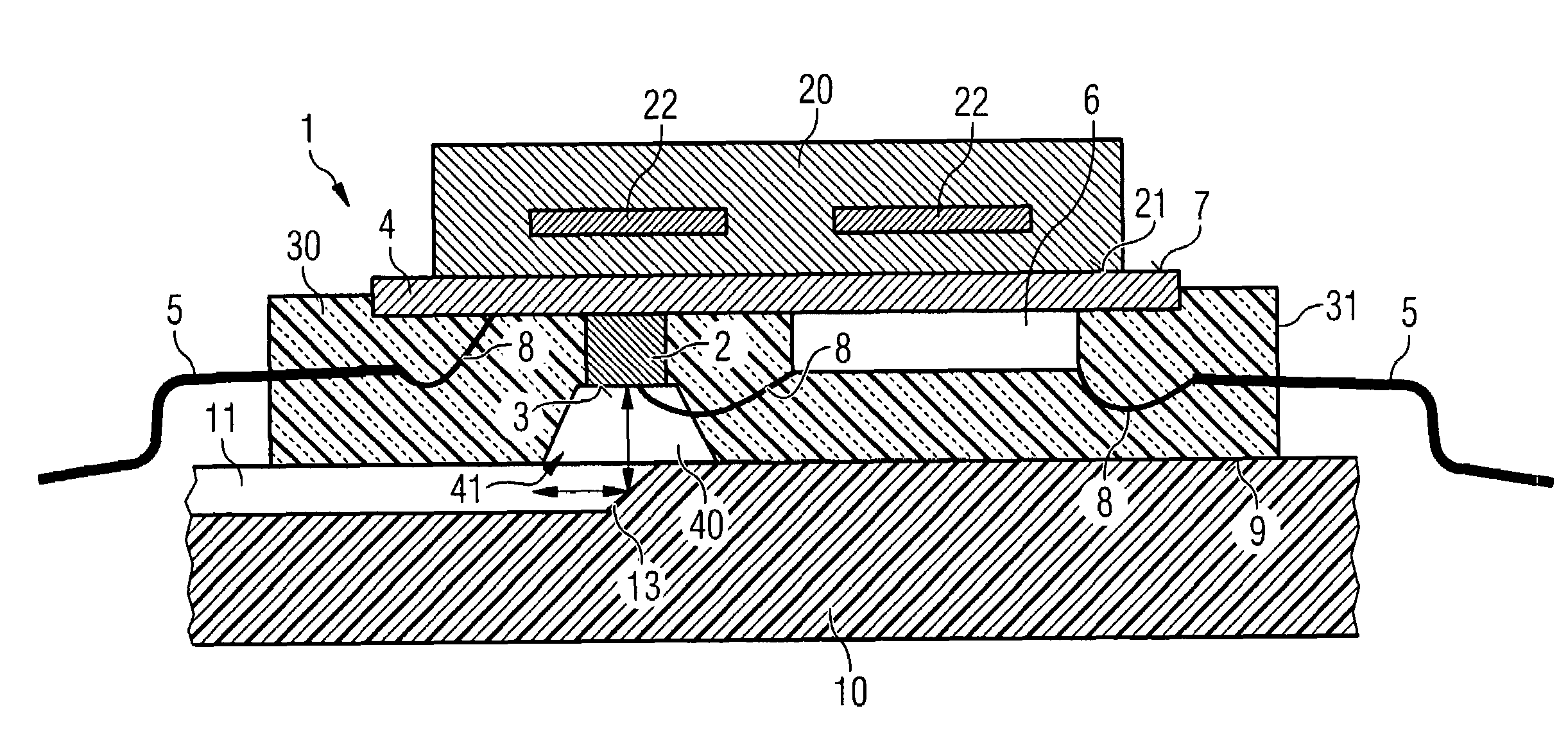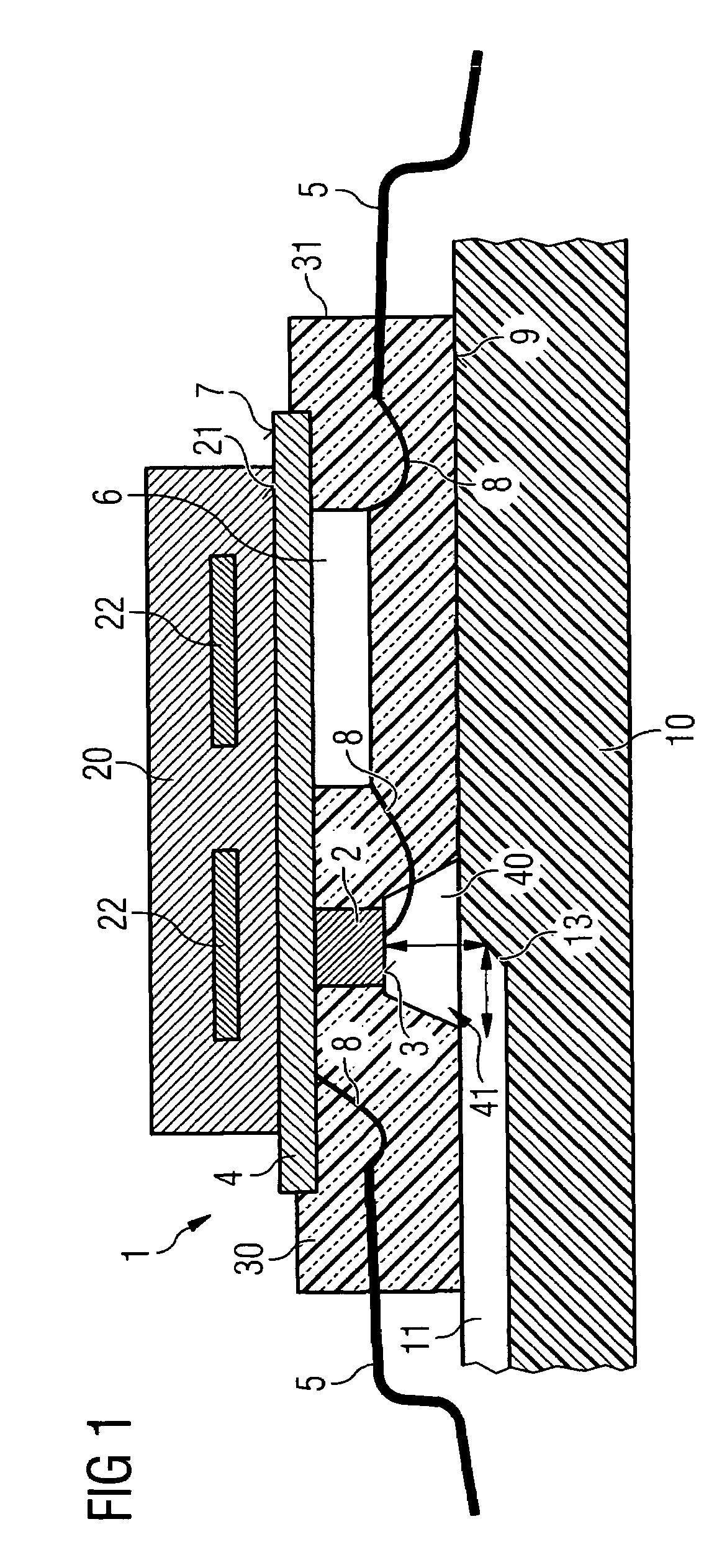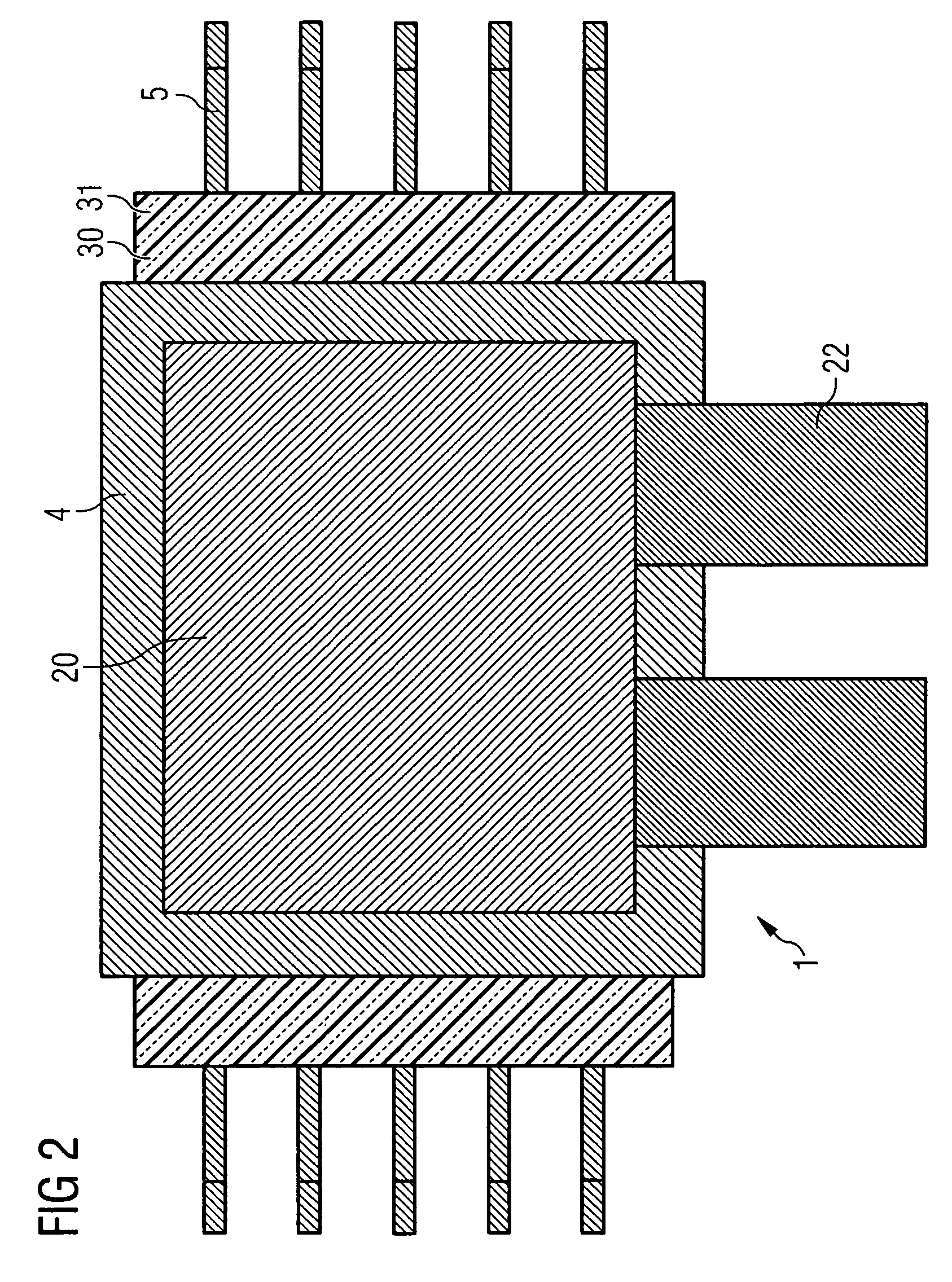Optoelectronic arrangement having a surface-mountable semiconductor module and a cooling element
a technology of semiconductor modules and cooling elements, which is applied in the direction of optical elements, instruments, optical waveguide light guides, etc., can solve the problems of how surface-mountable transmitting and/or receiving units can be expediently cooled, and achieve the effect of maximizing temperature compatibility, reducing the cost of cooling, and increasing the temperature rang
- Summary
- Abstract
- Description
- Claims
- Application Information
AI Technical Summary
Benefits of technology
Problems solved by technology
Method used
Image
Examples
Embodiment Construction
[0029]FIG. 1 shows a diagrammatic section through a surface-mountable semiconductor module 1, which is mounted on a printed circuit board 10 by means of contact legs 5 in such a way that its mounting side 9 points toward the printed circuit board 10.
[0030]In this case, the semiconductor module 1 first comprises a leadframe 4 arranged parallel to the printed circuit board 10. The contact legs 5, which arrange the leadframe in its position parallel to the printed circuit board 10, run between the leadframe 4 and the printed circuit board 10 and provide an electrical contact. Furthermore, the semiconductor module 1 comprises an optoelectronic transmitting and / or receiving unit 2. This may be for example a VCSEL, an LED or some other surface-mountable transceiver.
[0031]The printed circuit board 10 is composed of customary printed circuit board material or of a patterned plastic film (e.g. of Kapton®).
[0032]The optoelectronic transmitting and / or receiving unit (optoelectronic unit) 2 is ...
PUM
 Login to View More
Login to View More Abstract
Description
Claims
Application Information
 Login to View More
Login to View More - R&D
- Intellectual Property
- Life Sciences
- Materials
- Tech Scout
- Unparalleled Data Quality
- Higher Quality Content
- 60% Fewer Hallucinations
Browse by: Latest US Patents, China's latest patents, Technical Efficacy Thesaurus, Application Domain, Technology Topic, Popular Technical Reports.
© 2025 PatSnap. All rights reserved.Legal|Privacy policy|Modern Slavery Act Transparency Statement|Sitemap|About US| Contact US: help@patsnap.com



